Description of varieties of garlic Messidor and Germidor, features of cultivation and yield
Companies that harvest seeds, select the largest cloves, and regularly update the planting material. Large bulbs grow from it, which do not undergo diseases, have an attractive appearance, do not deteriorate for a long time. Fields and vegetable gardens are planted with Dutch varieties of garlic. Summer residents are satisfied with their yield, farmers grow bulbs for sale, and this product does not stale in the markets.
Description of varieties
Hermidor's garlic originated in Holland, now it is cultivated in different countries. The crop ripens in the first summer month or even at the end of May. The head is different:
- purple color of scales;
- round shape;
- weighing from 60 to 90 g.
The stalk of Germidor's garlic grows up to 75 cm in length. Each bulb contains 10 or 15 cloves, arranged in 2 rows. More than half a ton of crops matures on 1 acre of land per season.
Garlic of the Messidor variety, which does not impose special requirements on the soil, is no less popular with farmers and gardeners. Up to 12 long dark green leaves develop on one bush. The white round head has 14 teeth. It weighs more than 100 grams, there are bulbs weighing 160 g, in which there is a lot of ascorbic acid and sugar, there is a rich garlic aroma.
The characteristics of Messidor and the description of the size of the heads have attracted farmers, and they actually harvest more than 20 tons of juicy product with a bitter taste per hectare.

Summer residents who plant this Dutch garlic on their site write enthusiastic reviews, in which they claim that several bulbs with a total weight of half a kilogram are harvested from one plant. Such winter garlic is grown in Russia, in Moldova, it pleases with the harvest of Belarusian and Ukrainian gardeners and farmers.
Advantages of varieties
Both Messidor and Hermidor take root in different climatic conditions, grow on loam, and on sandy, and sod-podzolic soils, and on black soil. Garlic is grown both in arid steppes and in regions with high humidity. The advantages of Dutch varieties include resistance:
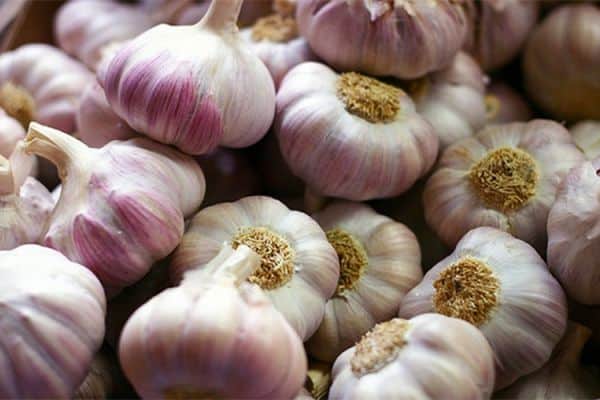
- to bacteriosis;
- black and green mold;
- white rot.
Planting crops withstand frosts up to 15 degrees in fields where there is no snow, give an excellent harvest. The bulbs are perfectly stored until January, do not lose their presentation. The best cloves are selected for seeds; there should be at least 8 of them in one head.
Features of agricultural technology
Planting material needs to be changed every 4 years, otherwise the culture will begin to degenerate, the heads will become small, and the yield will decrease. A place for the garden must be selected, where the sun shines all day, no shadow falls.Garlic does not tolerate waterlogged soil, where underground and melt water accumulates.
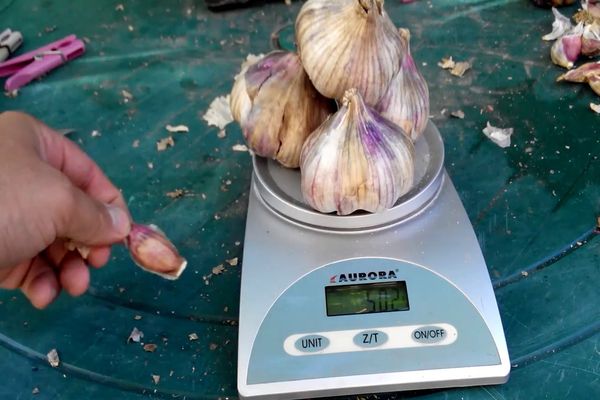
A varietal plant is not recommended to be planted on a site where bulbous crops, carrots, potatoes, radishes grew last season. You cannot grow garlic in one place, it will start to hurt, pick up the fungus.
After digging up the earth, which must be done in the fall, the soil is treated with a mixture, which is prepared by mixing in a liter of water one gram of boric acid of copper sulfate and potassium permanganate. Some summer residents temporarily cover the bed with polyethylene.
Before planting, the cloves of garlic are sorted out, the diseased seeds are set aside, and the healthy ones are soaked in a pink solution of potassium permanganate. The earth is fertilized with humus or dry plant ash, superphosphate and potassium salt are added.
How are they planted?
10 seeds must be placed on 1 running meter. The teeth deepen into the ground by 5 centimeters, between the rows it is necessary to leave no more than 25 cm.When growing garlic in clay and acidic soil, a layer of sand is added to the soil, for this, grooves are dug in it. Seeds are placed with teeth upwards. The holes are watered and covered with earth.
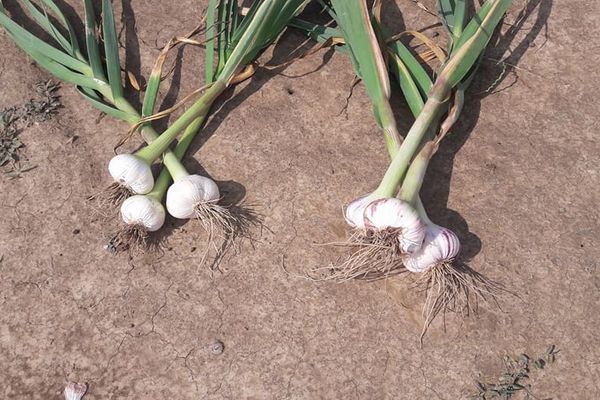
Planting of Dutch winter varieties of garlic begins in October and continues until mid-November, when the air temperature drops to +5. The sprouts appear in March.
Care features
In regions where winter does not please with snow, garlic beds are covered with agrofibre, sprinkled with needles, fallen leaves, mulched with straw, peat, humus. Garlic care includes:
- Fertilizing the soil. Top dressing is carried out when sprouts appear, during ripening, before harvesting.
- Moisturizing. The culture does not require frequent watering, water is needed only in drought.
- Weeding and weeding.
- Loosening the soil. The soil is saturated with oxygen necessary for plant development.
Garlic Hermidor ripens earlier than the Messidor variety. However, the timing of the harvest is influenced by weather conditions. On cool rainy days, the bulbs ripen later. In order to preserve the taste, you need to ensure that the head does not disintegrate into teeth, you need to pay attention to the condition of the scales and inflorescences. If the lower leaves turn yellow, it's time to dig out the garlic.
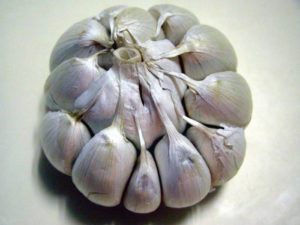
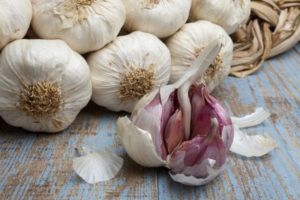
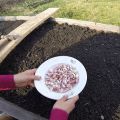
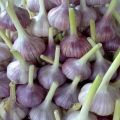

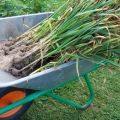

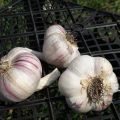


"... Summer residents ... write rave reviews ... several bulbs with a total weight of half a kilogram are harvested from one plant ..."
Duc, the horse understands - plant a whole bulb, and there will be several bulbs in the nest. ANY variety, where are the germidors-messidors ?!